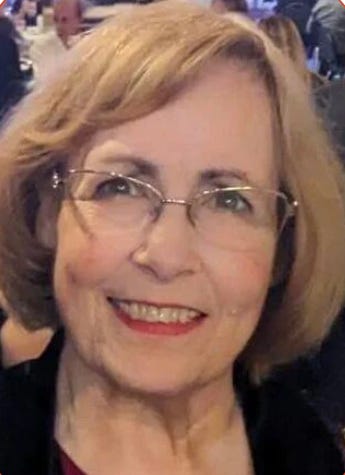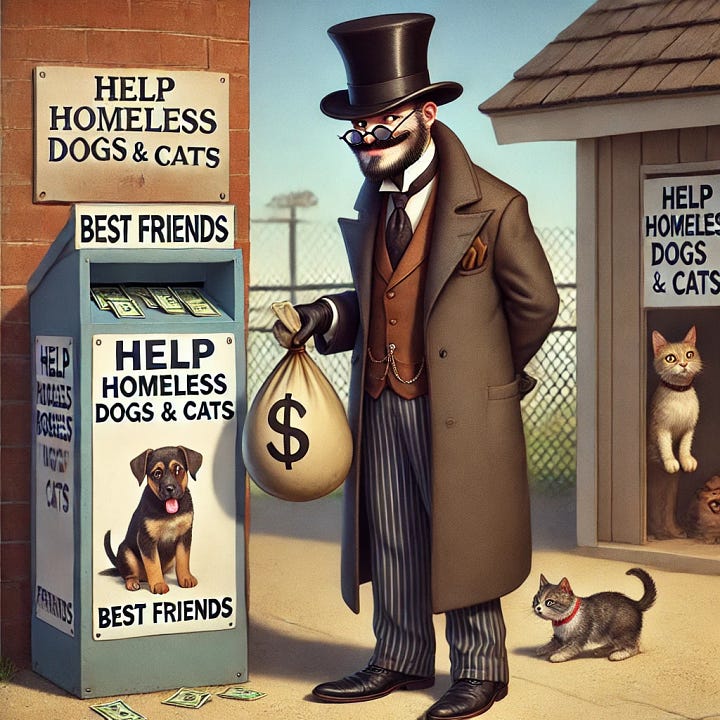Best Friends' No-Kill Initiative: A Power Play with Local Consequences
How Best Friends Uses Humiliation Campaigns to Shape the National Animal Welfare Narrative
Best Friends Animal Society's promise of achieving 'no-kill' is causing friction in cities beyond Los Angeles. In Danville, Virginia, a recent clash with Best Friends left the local humane society struggling to retain control over its policies—a warning Los Angeles should heed as it navigates its own challenges with Best Friends and their strategist, Kristen Hassen. These issues aren't confined to Danville. New revelations from El Paso and San Antonio, Texas, show that Best Friends' strategies are raising concerns in multiple communities.
Understanding "No-Kill": Aspirations vs. Reality
As communities aim for "no-kill," it's crucial to understand the difference between Best Friends’ definition and the real-world challenges of implementing it. Best Friends defines "no-kill" as saving at least 90% of the animals entering a shelter.
However, as shelters approach this threshold, they increasingly care for the most vulnerable animals—the sick, injured, and dangerous—because successful spay/neuter programs and responsible pet ownership reduce the intake of healthy, adoptable animals. The shelter’s role naturally shifts toward being a safety net for these at-risk animals.
This makes achieving a 90% live release rate nearly impossible. As shelters focus on rehabilitating or caring for animals with severe medical or behavioral issues, euthanasia becomes limited to cases where rehabilitation isn't viable. In this way, a shelter may honor the spirit of "no-kill" even if it doesn’t meet the strict 90% target.
The key difference lies in Best Friends’ narrow focus on a quantifiable goal versus the nuanced reality that communities face. Effective animal welfare requires adjusting strategies based on the evolving needs of the animal population, which makes Best Friends' rigid "no-kill" benchmark unrealistic and often contentious in practice.
Transparency and community involvement are essential for shelters to balance humane care with public safety, achieving a genuine form of "no-kill" without compromising their mission.
The Danville Experience
This dynamic sparked a conflict between Best Friends and the Danville Area Humane Society (DAHS), led by Paulette Dean, a steadfast advocate for comprehensive animal welfare since 1984. The clash began with a seemingly simple offer: Best Friends proposed transferring cats from DAHS to their New York facility. However, tensions escalated when Dean refused to adopt Best Friends' limited admission policy, which restricts intake to manageable numbers but disregards the needs of animals arriving at the shelter.
In response, Best Friends launched the “Danville Deserves Better” campaign, publicly criticizing DAHS for its lower-than-average save rate. This highlights a central issue in the "no-kill" debate: while boosting save rates sounds commendable, it must be weighed against the reality of caring for a growing population of sick, injured, and dangerous animals that may not be adoptable in the short term.
This public shaming campaign, disturbingly similar to the pressures currently facing Los Angeles Animal Services (LAAS), underscores Best Friends' tendency to wield statistics to advance its agenda. The parallels are striking: in both Danville and Los Angeles, a well-funded organization enters with promises of achieving higher save rates, only to foster division and public pressure. In the process, they prioritize numerical targets over nuanced, community-specific solutions that truly serve both animals and residents.


A Clash of Philosophies: Local Communities vs. National Initiatives
At the core of the conflicts in both Danville and Los Angeles is a fundamental clash of philosophies about what defines effective animal welfare. Leaders like Paulette Dean of DAHS, along with many other local shelter advocates, argue that Best Friends’ no-kill initiative oversimplifies the complex realities that municipal shelters face. Dean contends that adopting a limited-admission model could result in turning away the very animals most in need of care—something she calls “unacceptable.” For her and her community, DAHS exists to protect and support all animals, and denying them help would betray the core mission of humane societies.
This philosophical divide underscores the tension between Best Friends' aspirational goals and the real-world challenges local shelters navigate. While a 90% live release rate appears commendable, it must be balanced with the responsibility of caring for animals that may not be easily adoptable. Communities that grasp these complexities can develop humane, sustainable practices tailored to their unique circumstances, rather than following rigid national initiatives that don’t always align with local needs.
A Genuine Path to No-Kill
While Best Friends promotes the no-kill movement nationwide, many shelters face specific challenges that complicate the pursuit of higher save rates—particularly with overrepresented breeds like Pit Bulls. Without addressing the root causes of overpopulation, such as irresponsible breeding, inadequate spay/neuter programs, and community misconceptions, a singular focus on raising save rates can backfire, overwhelming shelters without tackling the core issues.
For Los Angeles and other communities under pressure from Best Friends, the lesson is clear: achieving true no-kill requires prioritizing preventive measures. Focused spay/neuter initiatives, especially for high-risk groups like Pit Bulls and feral cats, offer a more sustainable path. By addressing these root causes, shelters can provide compassionate care while ensuring long-term success.
A Cautionary Tale for All Communities
The Danville experience is far from unique. Across the country, many communities are feeling the strain of Best Friends' pressure to achieve its "90% save rate." Critics argue that while Best Friends presents itself as a leader in animal welfare, its track record includes clumsy withdrawals from shelter management, costly lawsuits, and alarming incidents—such as allegedly placing a known dangerous pit bull with a family, leading to the tragic disfigurement of a child.
In El Paso, this strain became all too clear when public complaints of pet abandonment under Best Friends’ embed program led to the termination of their contract. The city saw a significant rise in stray animals, which caused public safety risks, health concerns, and stretched local animal services thin. As Ron Comeau, director of Lucy’s Dream Rescue, put it, “It’s going to take El Paso years to recover from Best Friends’ programs.”
Similarly, in San Antonio, Kristen Hassen's "let them roam" approach led to a federal lawsuit when three pit bulls—despite multiple public complaints—were released back to their owners and subsequently killed an elderly man. This tragic incident illustrates the dangers of prioritizing shelter depopulation over community safety, leaving local officials and communities grappling with the aftermath.
The friction between Best Friends and shelters in places like El Paso, San Antonio, Danville, and Los Angeles underscores a recurring theme: local shelters, often underfunded and overburdened, are pushed to meet unrealistic expectations set by a distant, wealthy nonprofit that seems more focused on marketing and fundraising than addressing the unique needs of each community. In a landscape where Best Friends attempts to silence its critics, Paulette Dean stood firm against the organization's influence in Danville. Similarly, other shelter leaders have voiced concerns about Best Friends' obsession with metrics, arguing that it undermines genuine animal care and leads to decisions that prioritize statistics over the well-being of animals.
The Stakes for Los Angeles
The stakes are high for Los Angeles, a city with a rich and complex animal welfare history. If Los Angeles were to adopt Best Friends and Kristen Hassen’s model wholesale without fully evaluating the implications, it could face the same problems now plaguing Danville, El Paso, and San Antonio. Best Friends' tactics of public shaming and media pressure can be divisive, creating an environment where community-based, holistic approaches to animal welfare are overshadowed by the race to hit artificial numerical benchmarks.
By learning from the experiences of communities like El Paso and San Antonio with Best Friends, Los Angeles can choose an approach that respects local expertise and nuances rather than applying one-size-fits-all solutions. The pursuit of "no-kill" should not compromise long-term, sustainable animal welfare. As Los Angeles charts its path forward, it must ensure that any partnership with Best Friends, and associates like Kristen Hassen, is grounded in transparency, realistic spay/neuter goals, and a commitment to both animals and the community.
Conclusion
Ultimately, the pursuit of no-kill must reflect a commitment to compassionate care and ethical decision-making that benefits both animals and the community. Los Angeles has a chance to lead by example, but only if it avoids the pitfalls seen in other cities and focuses on solutions that work for its unique challenges. The stakes are too high for a misstep.
Pertinent Additional Reading
Harnessing the Power of the Per Capita Kill Rate: The Live Release Rate and Euthanasia Rate fail to capture the true impact of shelter policies and programs. This white paper explains how the Per Capita Kill Rate provides a true measure of change in context of broader community dynamics, offering insights into how effective policies can lead to better animal welfare outcomes.
Ed Boks is a former Executive Director of the New York City, Los Angeles, and Maricopa County Animal Care & Control Departments. He is available for consultations. His work has been published in the LA Times, New York Times, Newsweek, Real Clear Policy, Sentient Media, and now on Animal Politics with Ed Boks.




Aurora Velazquez, a Danville Deserves Better/Best Friend's Animal Society's representative "vilifies" Paulette Dean for her "euthanasia numbers" when Ms. Velazquez has her own history of high euthanasia numbers at the facilities she was in charge of. Most egregious is the treatment of Saint, a dog that came into ACCT Philly, when Ms. Velazquez was the director. At the facility, Saint's jaw was broken, Ms. Velazquez refused to allow Saint's owner to reclaim him, then illegally killed Saint and lied about it to cover up the cruel and inhumane treatment of Saint at ACCT Philly. Public outcry demanded Ms. Velazquez be fired and criminally charged for what she did to Saint. Shortly thereafter, Best Friend's Animal Society hired Ms. Velazquez. But this is nothing new for Best Friend's...they have a pattern of hiring many "upper management" people from shelters that have a history of cruel and inhumane treatment against the animals coming into their shelters.
Paulette Dean has been nothing but transparent and she ensures the animals that come into Danville Humane Society are properly cared for. It's imperative that the community of Danville know the history of those representing Danville Deserves Better/Best Friend's Animal Society...are these the people the community of Danville can trust to ensure the safety of the animals in their community...the answer is simple...NO!
Thank you so much for setting the record straight best friends Austin pets alive Kristen Hassen Ellen Jefferson paula Powell hass sheltering plan left in it's wake a series of deceased strays on the streets increase in dog attacks Disease at an all time high and the community afraid to walk there smaller dogs or even leave there pets alone in there own back yards in fear of attacks by strays